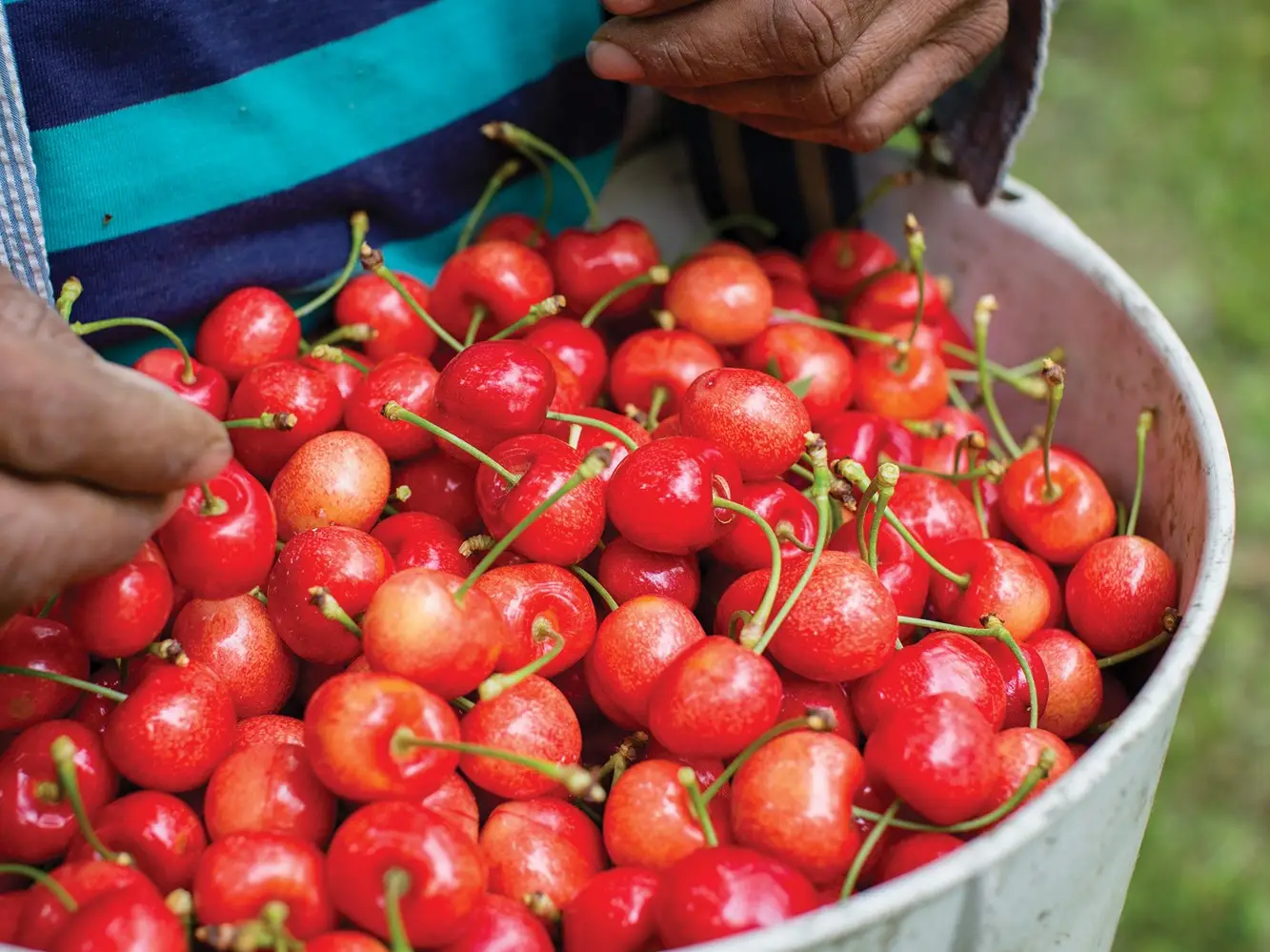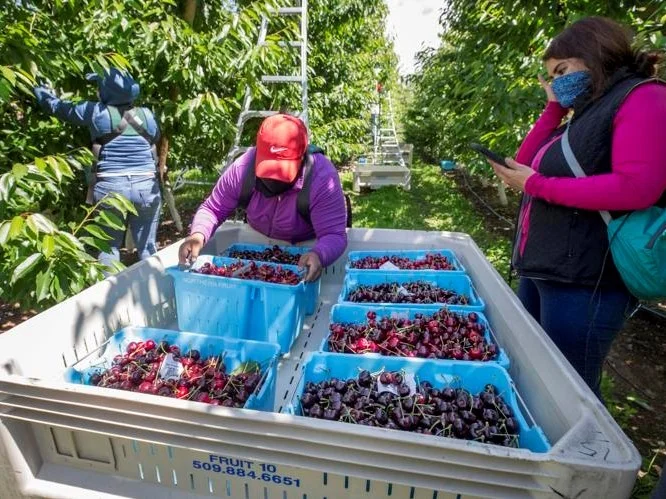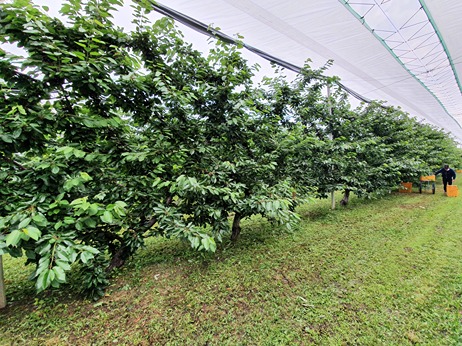The 2025 Washington cherry season will be remembered for its irony. Growers delivered some of the best fruit in years, beautiful cherries, clean pack-outs, and healthy volume, but still faced one of the most challenging market outcomes in recent memory.
As a management partner working closely with orchard owners across Central Washington, Columbia Farm Services (CFS) witnessed the season’s highs and lows firsthand: the optimism of a perfect crop, the frustration of market delays, and the reality of difficult decisions at harvest.
“We had the quality every grower hopes for,” says Mike Grubbs, Director of Business Development. “The cherries were big, flavorsome, and vibrant. Everything pointed to a strong year. But when the market didn’t move, it changed everything.”
 Image 1. Source: Yakima HR
Image 1. Source: Yakima HR
Season of promise and challenge
The season began with high expectations. Washington’s growing conditions were nearly ideal, and pack-outs confirmed what many anticipated—an exceptional crop.
But a slow retail transition from California changed the outlook. Even as California’s crop wound down, its fruit continued to occupy valuable retail shelf space. When Washington’s cherries entered the market early, the overlap created an oversupply and weakened demand.
“It wasn’t a quality issue—it was a timing and volume issue,” explains Mike Grubbs. “Retailers were slow to make room, and by the time Washington cherry’s were ready to move, the momentum was gone.”
As a result, prices fell quickly. Despite strong fruit and high pack-out rates, returns dropped below harvest cost for many growers.
Fallout across the industry
The effects of the pricing collapse were felt across the industry. Some growers chose not to harvest parts of their crop—an unthinkable but necessary choice when picking costs exceeded potential returns.
“We saw good fruit left on trees, not because it wasn’t marketable, but because the market couldn’t support the cost to pick it,” says Mike Grubbs. “That’s a tough reality for any grower to face.”
Warehouses and marketers also struggled to manage inventory. With fruit movement slowing and returns declining, growers, often the last link in the payment chain, absorbed the greatest loss.
CFS’s focus during this time was stabilization—protecting its partners through active management, transparent communication, and strategic financial support.
 Image 2. Source: snews.com
Image 2. Source: snews.com
Protecting grower margins
“Our number one priority is protecting our partners’ bottom line,” says Mike Grubbs. “In years like this, that means using every tool we have (insurance, relationships, strategy) to help our investors come through it stronger.”
The industry challenge: A supply chain out of sync
The 2025 cherry market underscored a persistent imbalance in the industry: growers carry most of the risk but have limited control once fruit enters the marketing chain.
- Retail Delays: California fruit held shelf space longer than expected, compressing Washington’s selling window.
- Limited Coordination: Without real-time alignment between packers, marketers, and retailers, Washington’s early volume created unintended competition.
- Delayed Returns: As packers managed pricing shortfalls, growers faced slow or reduced payments.
“The grower is always at the bottom of the reimbursement chain,” says Mike Grubbs. “Warehouses and marketers absorb losses first, but it ultimately lands on the grower’s shoulders. The system isn’t built to share that risk evenly.”
For CFS, this reality reinforces the importance of transparent partnerships, stronger communication loops, and shared accountability across the supply chain.
While no one could fully avoid the season’s financial hit, CFS leaned on its collaborative model to soften the impact.
 Image 3. Source: www.wenatcheeworld.com
Image 3. Source: www.wenatcheeworld.com
Partnership and resilience
- Partnership First: CFS worked closely with warehouse and marketing partners to identify the most profitable placement for each partner’s fruit.
- Operational Agility: Mid-season adjustments helped control costs and protect orchard health.
- Crop Insurance Guidance: Expert consulting assured partners accessed available coverage to offset revenue loss.
“We can’t control retail pricing, but we can control how we respond,” says Mike Grubbs. “That’s where our partnerships and management experience make the difference.”
These efforts didn’t erase the market pain, but they gave the CFS team and partners a sense of direction when conditions were most uncertain.
Looking ahead: Building resilience for 2026 and beyond
The lessons of 2025 are clear: investors must build resilience not only in the orchard but across every link in the system that connects fruit to market.
For Columbia Farm Services, that means continuing to strengthen the levers of control that growers do have—management excellence, informed timing, and trusted partnerships.
- Expanding strategic partnerships with packers and marketers for faster responsiveness.
- Leveraging block-level management data to guide harvest and distribution decisions.
- Supporting quality and profitability equally through operational insight and risk management tools.
“We’re focused on making sure our teams not only grow the best fruit—but have every advantage to make it profitable,” says Mike Grubbs. “That takes collaboration, innovation, and a willingness to keep improving how the system works.”
If there’s one positive takeaway from the 2025 cherry season, it’s the reminder that strong partnerships matter most in hard years.
Through market pressure and uncertainty, CFS saw its network of growers, packers, and industry partners come together—sharing information, adapting quickly, and supporting one another through the downturn.
“The fruit was beautiful,” reflects a CFS owner. “And while the market didn’t reward it this year, we learned a lot about how to adapt and support each other. That’s what will make next season—and the seasons after—stronger.”
"I frutti erano bellissimi", riflette un proprietario di CFS. "E anche se il mercato non li ha premiati quest'anno, abbiamo imparato molto su come adattarci e sostenerci a vicenda. Questo è ciò che renderà la prossima stagione, e quelle successive, più forti."
Source: Columbia Farm Services
Opening image source: Oregon Life
Cherry Times - All rights reserved















